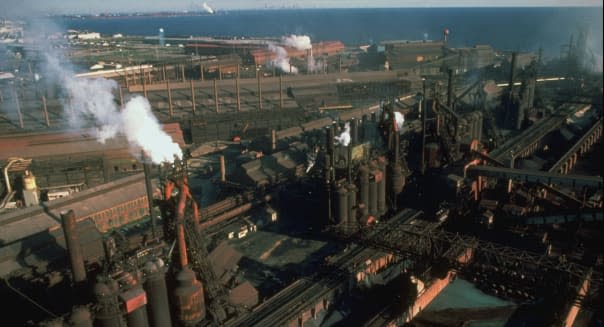How Once-Mighty U.S. Steel Ended Up on the S&P Scrap Heap

The bigger they are, the harder they fall.
That can be true in sports and in corporate America.
At one time, U.S. Steel (X) was the largest company in the world, but as of Tuesday, it's no longer big enough to be included in the S&P 500 (^GPSC), the index that includes 500 of the largest public companies in the United States.
Back in the day, U.S. Steel was a corporate superstar. Like LeBron, Beyoncé and other stars of today, it only needed one name -- it was often referred to simply as Steel. It was the world's first billion dollar company, and at its peak in the late 1950s, the company had an inflation-adjusted market value of $39.7 billion. Now, though, the company is valued at less than $4 billion.
That means it's worth less than such corporate "luminaries" as International Game Technology (IGT), United Therapeutics (UTHR) and Lululemon Athletica (LULU), the struggling maker of yoga pants. And also, worth less than the minimum market cap for the S&P 500.
America's Industrial Might
U.S. Steel was founded in 1901 by the legendary financier and industrialist Andrew Carnegie and several partners. Throughout much of the first half of the 20th century, the company was synonymous with the industrial growth and power of the nation. In 1943, the company employed more than 340,000 workers. Now it employs less than one-tenth of that number.
%VIRTUAL-WSSCourseInline-538%Over the years, it has had a stormy relationship with its workers, including some long, contentious and sometimes-violent strikes. It also butted heads with government regulators, who at one time tried and failed to break up the company on antitrust grounds.
For many years, it was the major employer in its headquarters city of Pittsburgh. The city's National Football League team took its nickname from the company, and the logo that the Steelers use on helmets was derived from the company's original logo.
U.S. Steel is still based in Pittsburgh, but its largest domestic steel plant is now in Gary, Indiana. It also has facilities in Alabama, Illinois, Maryland, Michigan and Minnesota. It was part of the Dow Jones Industrial Average from 1901 to 1991, before getting the boot from that index.
Cheaper Imports and Five Years of Losses
Its business has been hurt by a number of factors, including cheaper steel products from overseas. It now accounts for just 8 percent of the steel used in the U.S. and it's been buried under red ink, with five straight years of annual losses.
On Wall Street, U.S. Steel's stock has enjoyed a bit of a rebound of late, up 48 percent from a year ago. But a longer-term look shows that it's lost 27 percent of its value over the past five years -- running in the wrong direction during one of the strongest bull markets in history. Most analysts who cover the company have a "neutral" rating on the stock.
As of Wednesday, it will be replaced in the S&P 500 by Martin Marietta Materials (MLM).

